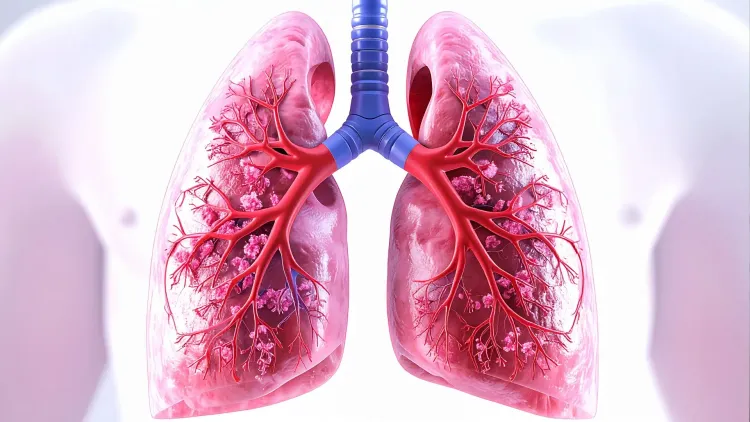Is a Higher Dose of Rifampicin Safe and Effective for Lung TB?

Synopsis
Key Takeaways
- Higher doses of rifampicin may improve outcomes for TB patients.
- Recommended dosage range is 20-30 mg/kg for optimal results.
- Early sputum conversion is linked to reduced risk of relapse.
- Increased doses should be monitored for adverse effects.
- Further trials are needed to confirm long-term outcomes.
New Delhi, July 17 (NationPress) A higher dosage of rifampicin -- an antibiotic that effectively combats tuberculosis (TB) -- may prove to be safe, leading to enhanced recurrence-free survival among individuals diagnosed with pulmonary TB, as revealed by a recent investigation conducted by the Indian Council of Medical Research (ICMR).
Despite being treatable, TB continues to be the leading cause of death from infectious diseases, claiming approximately 1.3 million lives worldwide in 2022. Rifamycins form a vital category of medication in the anti-TB treatment protocol, which sterilizes lesions and supports a cure without recurrence.
At present, the standard administration of rifampicin is set at 10 mg/kg for a duration of six months for all patients suffering from pulmonary TB.
The research team examined existing data from various published clinical trials to assess whether elevated doses of rifampicin (over 15 mg/kg) offer greater efficacy and safety.
“In comparison to the standard dosage, increased doses of rifampicin were observed to facilitate early sputum conversion within eight weeks, thereby expediting the clearance of TB bacteria,” stated the lead author, Dr. Leeberk Raja Inbaraj from the Department of Clinical Research at the ICMR- National Institute for Research in Tuberculosis, Chennai.
Early sputum conversion serves as a crucial surrogate marker for evaluating treatment response and identifying patients at risk of relapse in pulmonary TB.
“The capacity of high-dose rifampicin to achieve early sputum conversion and eradicate the lingering bacteria responsible for relapse could significantly contribute to recurrence-free survival. Prompt bacterial clearance is also of public health significance as it may help diminish disease transmission within communities,” the researchers noted.
Interestingly, the study identified a dosage range of 20-30 mg/kg rifampicin as the optimal balance.
“This dosage range exhibited superior sputum conversion without a notable rise in severe side effects and should be considered in TB treatment,” the study published in the Indian Journal of Medical Research (IJMR) concluded.
Conversely, doses exceeding 30 mg/kg presented significant adverse effects, including severe liver damage (hepatotoxicity) and adverse drug reactions (ADR), which could result in treatment discontinuation.
The investigation found no reduction in mortality or treatment failure among individuals receiving more than 15 mg/kg doses of rifampicin.
“Elevated doses did not lower mortality or treatment failure rates at six months when compared to standard treatment,” the team asserted.
“This dosage level should be administered with thorough monitoring for adverse events and hepatotoxicity. There is an urgent need for adequately powered trials to evaluate long-term treatment outcomes, including recurrence,” they added.









